02. A mass grave(partly) translated by Lina Sidarto |
| This grave is a silent witness to the Indonesian government’s indifference towards the Chinese minority in the 1960s. |
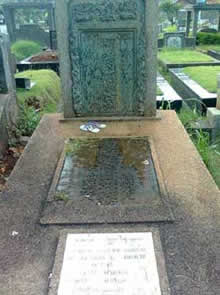 |
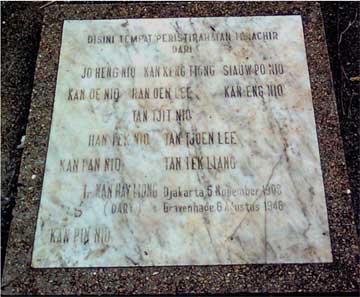 |
Epitaph (translated):
|
|
Epilogue |
|
| A delay of one week was too short:: | |
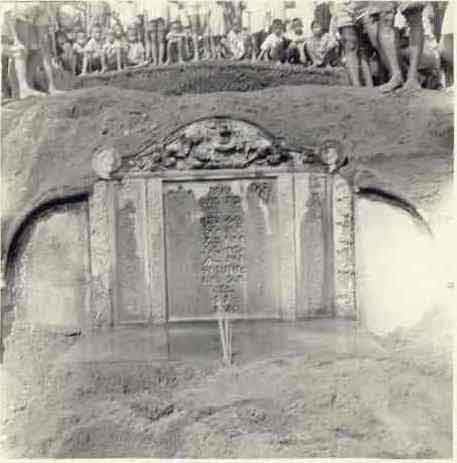 |
|
|
|
The plundered or already bulldozered graves had no undamaged bongpais anymore. Two bongpais where saved. The most important one was of our ancestral father Kan Keng Tiong. The other one was of the eldest daughter of Kan Keng Tiong: Kan Eng Nio known as“Mah De” or “Twa Ipoh”. My father had a special bond with Kan Eng Nio since he was her special attendant in her last years. |
|
De Bongpai of Kan Keng Tiong |
|
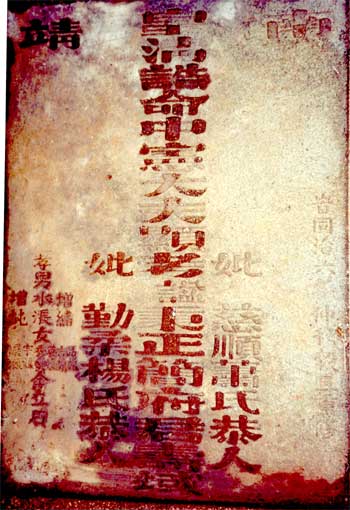 |
(translated by Koos Kuiper) This picture is a gravestone of a member of the Kan family of whom we only know his posthoumus name Ping Tsing (?) . He has to be the grandfather of H.H. Kan. The names of his two wifes Siauw en Jo are also mentioned. Place of origin is named: Nanjing (near Zhangzhou). Dates are mentioned as "second month of autumn 1867", possibly the year in which the grave is constructed. He has an imperial title of honour but his function is not mentioned. Drafted by three sons and 7 daughters.The sons Tjeng-Soen, Soei-Tjiang and Tjeng-Sie are mentioned, and the daughters Oe-Nio en Eng-Nio. Kan Keng Tjong had a second, postume naam Ping Tsjing (Mandarin: Bingzheng), litteraly "insist on the right/ the righteous" |
|
In earlier years people had more names: de real name (on gravestones "taboo name"), a regularly used name, one or more nicknames etc., and sometimes a posthumous name. It does mean that Kan Keng Tjong was an important person. For the two wifes there where also exalted posthumous names, meaning "Lovingly and docile" (Siauw) en "Diligent and kind-hearted" (Jo). They both have the title of (Mandarin:) gongren,"spouse of a civil servant of the fourth rank" The daughters are from right to left: Pin, Kiat [?difficult to read], Eng, Siauw (or: Tioe), Oe, Tian, Pan (?). 品吉(?)英秀宇展盼(?) |
|
The Bongpai of Kan Eng Nio |
||
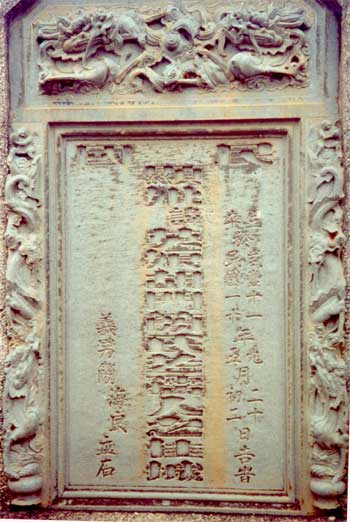 |
(Translation Koos Kuiper) Because of these events my grandmother wanted the graves of her husband Tan Tjoen Lee and her son Tan Tek Liang (Ferrie) to be dug up as well , despite the fact that they where burried near Bogor and were not in danger of being destroyed. |
|
| The mass grave was finished after my grandmother Han Tek Nio passed away, it was completed in 1969. Before that time, the collection of bags with the ashes of the family members where kept at home on the family altar. | ||
|
In the pictures below the grave of Dary Kan Hay Liong can be seen before and after it was build into a massgrave. The first picture from 1954 still shows the handles on the concrete plate on the grave of Dary Kan Hay Liong (right side in the corner). The second picture is taken in 1988. |
||
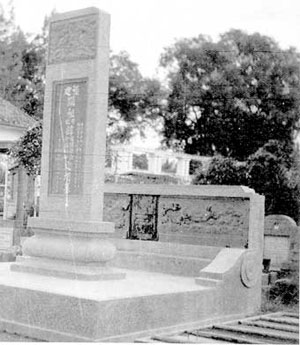 |
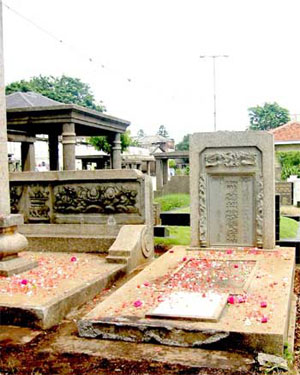 |
|
This story was published earlier in a short version on the site : http://cihc.nl/ Steve Haryono: hehe, fotonya Michael Hadi ( these pictures are taken by Michael Hadi).Grin emoticon
Michael Hadi Hayashi: ya , saya senang jika dipublikasikan dengan benar.. selama ini pihak2 tour leader LOH melewati begitu saja makam ini..tanpa mau tahu baca tulisannya.. saya beritahukan mereka gak mau peduli.. |
Berkel, 7 augustus 2017 |
